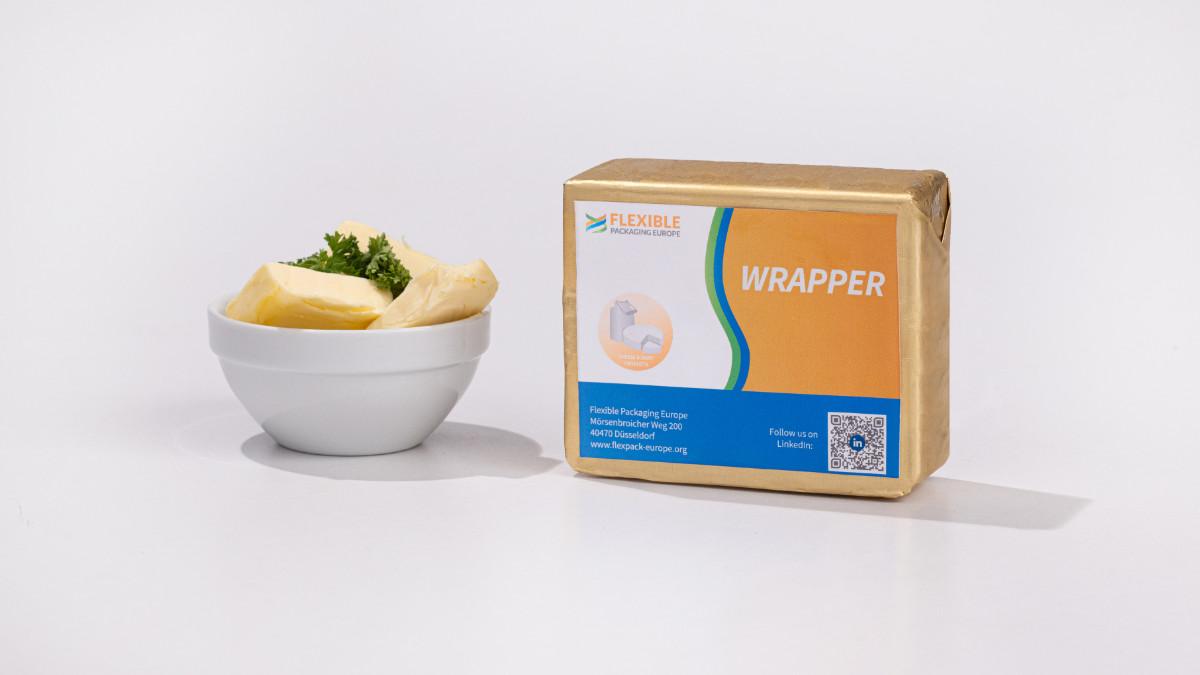Butter, cheese and yoghurt have different requirements: Consumers expect hygiene, functionality and easy handling.
Dairy products are part of many people’s daily diets – whether as a sandwich topping, a snack, or a cooking ingredient. However, expectations regarding packaging vary considerably depending on the product. Aspects such as freshness, hygiene, and ease of use take centre stage. A recent consumer survey in six European countries sheds light on these differences and shows where flexible packaging is already performing well and where there is further potential.
Stable consumer behaviour
Regarding butter, the survey shows: Despite significantly higher prices, consumer behaviour remains comparatively stable. 45% of consumers state that they have not changed their purchasing habits. Just 6% have stopped buying it altogether. Packaging does not play the main role in the decision-making process, but still influences perceptions through aspects such as handling, portioning and shelf life. Packaging solutions that accommodate these diverse uses offer real added value.
The perceptions are similar differentiated for cheese – although here the function of the packaging takes centre stage even more: 48% of respondents cite resealability as the greatest advantage of packaged dairy products, followed by hygiene (42%) and longer shelf life (41%). Ease of portioning (36%) and recyclability (34%) are also frequently mentioned.
Packaging details should not be underestimated for yoghurt either. Although the pot is usually made of a rigid plastic material, flexible packaging solutions are often used for the lid. The majority of consumers are familiar with and use the classic aluminium lid (37%), often supplemented by a plastic cap (23%). However, when it comes to recycling, there is a need to catch up in terms of separating the lid from the cup: while 48% of end consumers always separate the lid from the cup, 18% never do. By comparison, among the experts at the leading industry event, the European FlexPack Summit, 69% always separate the lid, while only 13% never do. This means that knowledge about correct separation is partially available, but is not always applied in everyday life. Targeted, realistic education could help to improve behaviour and make better use of the strengths of flexible packaging in terms of recyclability.
Packaged dairy products are generally perceived positively. Consumers particularly value hygiene, shelf life, resealability, and portion control. Flexible packaging meets these requirements particularly well and, thanks to its adaptability, offers solutions for different consumption habits, markets, and lifestyles.
Packaging shapes the user experience
“The packaging may not be the centre of attention, but it shapes the user experience and thus also the purchasing decision,” says Guido Aufdemkamp, Executive Director of Flexible Packaging Europe. “The industry has achieved a lot in this area in recent years. Now it’s time to focus even more consistently on everyday usability, clarity of information, and functional design.”
The results show that flexible packaging can play to its strengths, especially in the dairy sector, when it is specifically tailored to requirements such as freshness, ease of use, and separability in the recycling process. This offers the industry a wide range of opportunities for further development – with concrete benefits for consumers and the environment.
The underlying study is based on a representative survey of approximately 6,000 end consumers in Germany, France, Italy, Spain, Poland, and the United Kingdom. It was conducted by Censuswide on behalf of Flexible Packaging Europe (FPE) and covers approximately 360 million people, or over 60% of the European population. The results were supplemented by a qualitative survey of industry experts at the first European FlexPack Summit in February 2025. The comparison of consumer and expert opinions provides valuable insights into the scope for action and opportunities for flexible packaging manufacturers.

